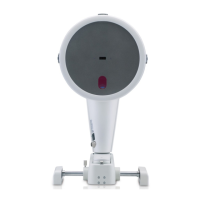12
4 Recommended settings and color maps, displays and values
4 Recommended settings and color maps,
displays and values
Physicians who are starting to work with the Pentacam® often turn to us with questions on settings
such as step width on the color scale, or which maps and values to consider before doing LASIK, PRK,
RK or phakic IOL (pIOL) implantation or in keratoconus examinations etc.
In the following chapter we present our recommendations on the more frequently addressed issues.
Hopefully they will also cover most of your questions or even provide new insights as you work
through them. They are no more than recommendations and not necessarily intended to discourage
you from using other maps and settings that you may have found to work best for you.
4.1 Recommended settings
When working through the following chapters it is advisable to consistently use the same settings so
as to be able to reproduce the values given.
In the elevation maps, use a sphere fitted in float (BFS) and set the calculation diameter to
manual and use 8 mm or 9 mm
In the scan menu, select “25 images per scan” and “auto release”
Keratometer presentation: R flat/R steep, unitdiopter (D)
Corneal form factor asphericity Q:
Q < 0: Untreated cornea, normal case
Q > 1: Treated cornea LASIK/PRK/RK etc
Color scale: American style
Step width:
Normal (10 μm) for pachymetry maps
Normal (1 D) for topography maps
Rel. (2.5 μm) Minimum for elevation maps
Use the 9 mm loupe function to obtain maps comparable with those of Placido based
topographers

